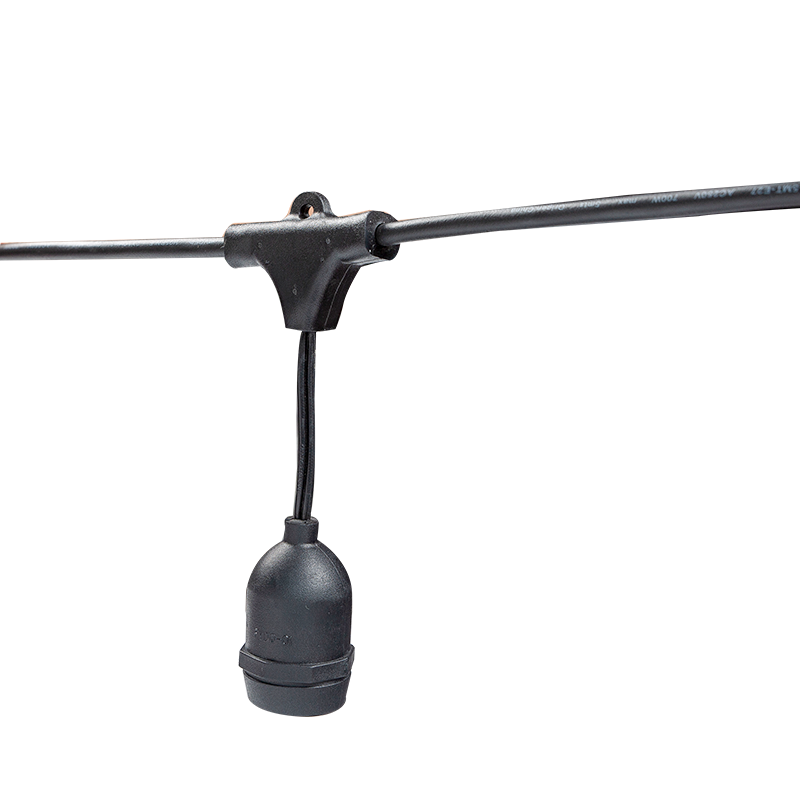To ensure that string lights do not overheat or experience voltage instability during use, take the following precautions and precautions:
Buy string lights with safety certifications such as CE, UL, and FCC. These certifications ensure that the product meets safety standards and reduces the risk of voltage instability or overheating.
Choose LED string lights: LED string lights are more energy-efficient, generate less heat, and have a longer lifespan than traditional incandescent string lights. LED lamps do not generate as much heat as incandescent lamps, reducing the risk of overheating.
When purchasing string lights, make sure that the rated voltage and current of the selected product are consistent with the power supply voltage. Ensure that the voltage is stable to avoid overheating or damage caused by voltage mismatch.
Don't connect too many string lights together, especially if they are not designed to support multiple connections. Usually, string lights have clear connection limits, and exceeding the limits may cause excessive current and increase the risk of overheating.
Try to avoid twisting or excessive bending of wires during use, which will affect the conduction of current and increase the risk of heat generation.
Use the right socket and power supply: Make sure the power socket of the string lights can withstand the current load to avoid overloading the power supply. Avoid plugging high-power devices and string lights into the same socket.
Regularly check the wires, plugs, sockets and power supply for signs of damage, cracks or aging. If the outer sheath of the wire is damaged, it is easy to cause unstable current or short circuit, which can cause overheating.
Make sure there are no exposed parts of the wire to avoid current leakage and overheating or electric shock.
Check the connection part of the string lights to ensure good contact between the plug and the socket to avoid loose or poor contact causing unstable current.
Make sure the string lights are waterproof string lights suitable for outdoor use, especially in humid or rainy and snowy weather conditions. If the string lights are not waterproof, moisture may cause unstable current or short circuit, further causing overheating.
Avoid placing the string lights in places where they are easily exposed to water, especially when using them, to ensure that the power supply and wires are not in contact with water sources.

When using string lights, make sure that the power adapter matches the power requirements of the string lights. Too strong or too weak adapters may cause unstable voltage, which in turn causes overheating.
The overload protection function of the power adapter is very important, so you need to check the operation of the adapter regularly to confirm that it is not overheating.
Avoid using string lights for long periods of time, especially when the current is high. Even for LED string lights, long-term continuous use will put some pressure on the battery, adapter, and wires. Turn off the string lights in time to give them time to cool down.
You can use a timer or smart socket to control the switch of the string lights to avoid continuous operation of the string lights when no one manages for a long time and reduce the risk of overheating.
Choose a socket with overload protection, which can automatically cut off the power supply when the current is overloaded to prevent the string lights from overheating or electrical failure.
Plug the string lights into the socket separately and avoid sharing the socket with other high-power appliances (such as air conditioners, electric heaters, etc.). This will ensure that the string lights get enough power support and reduce the risk of overload.
Some high-end string lights have built-in temperature control functions, which can detect the temperature of the lamps in real time and adjust them automatically to avoid voltage instability or damage due to overheating.
If possible, use a smart socket or controller to monitor the operating status of the string lights, and switch the light mode or turn off the string lights in time to prevent overheating.
When cleaning the string lights, avoid using water to directly rinse the lamps and power supply parts. Moisture may cause the electrical part to get damp, affect the current stability, and cause short circuit or overheating.
You can use a dry cloth to wipe the bulbs and wires, but be careful to avoid moisture from seeping into the electrical connection parts.
Try to avoid using string lights in extreme weather conditions (such as storms, heavy snow, strong sunlight, etc.), especially string lights used outdoors. If you need to use them, make sure that the string lights meet the waterproof and windproof design.
By taking the above measures, you can effectively avoid overheating or unstable voltage during the use of string lights, ensure safe use and extend the service life of string lights. If you encounter severe heating or unstable voltage of the string lights, you should stop using it immediately and check whether there are problems with the power supply, socket, wires and other components.



 English
English русский
русский















